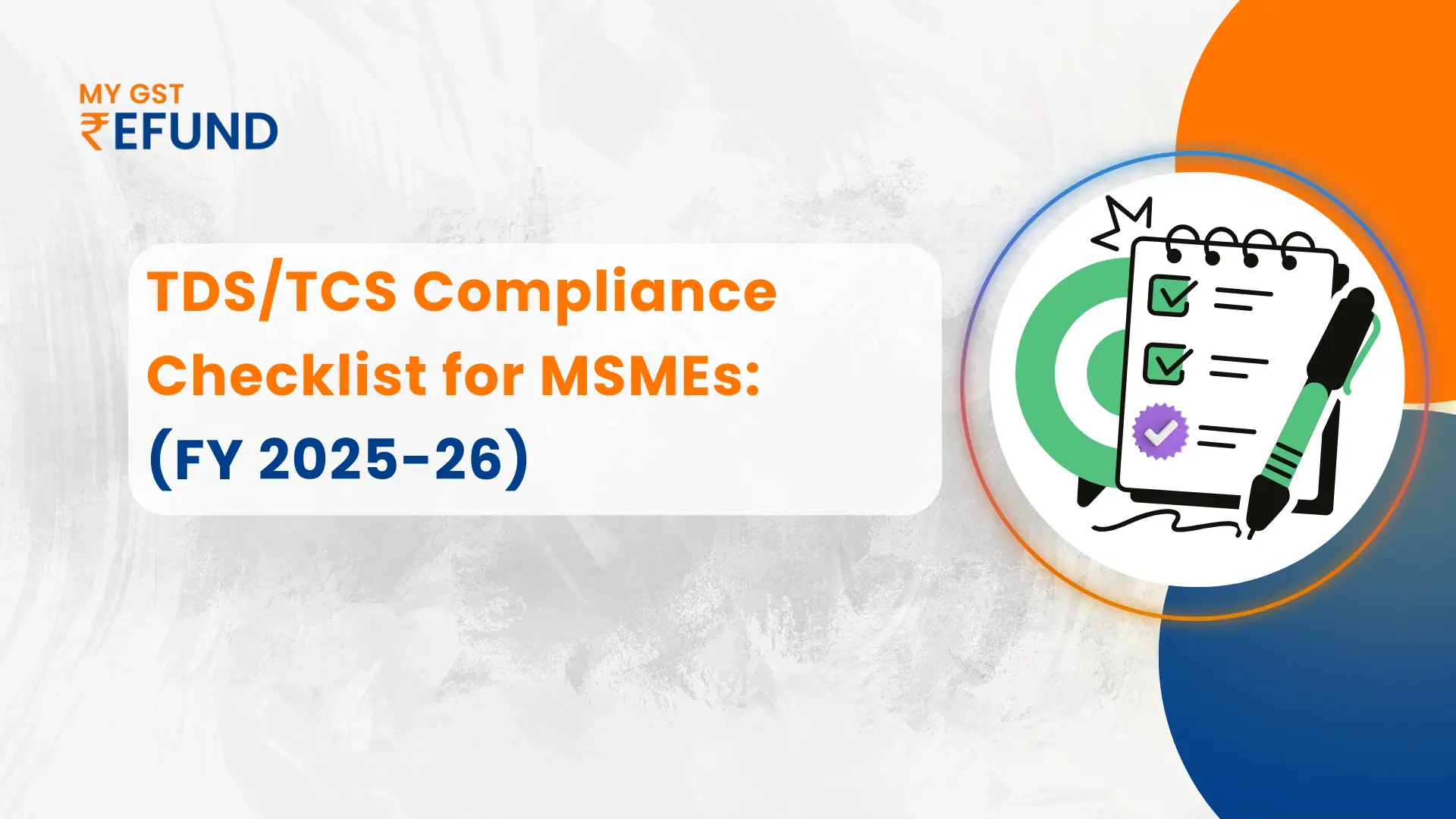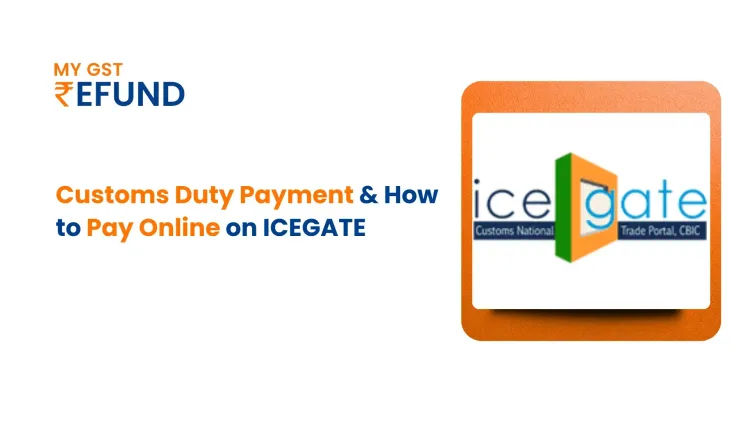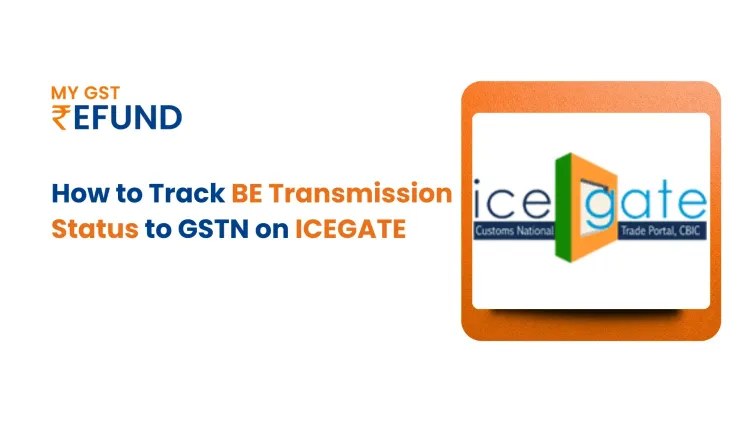How Taxes Impact E-Commerce Sellers and Platforms
Published on: Thu Sep 25 2025
Bio (Reveal/Hide)

TDS/TCS Compliance Checklist for MSMEs (FY 2025-26)
Tax Deducted at Source (TDS) and Tax Collected at Source (TCS) are very strong weapons in India by which the government is able to recover tax on sale, so that revenue can be guaranteed on a regular basis and control of financial transactions. Adherence to and familiarity with them for MSMEs are of prime necessity for hassle-free working and the prevention of punishment.
This manual gives a brief and to-the-point checklist to MSMEs on how to keep themselves updated with their TDS and TCS compliances for the Financial Year 2025-26.
Disclaimer: The Article is a general reading of tax laws as of September 2025. Tax laws are dynamic in nature and keep changing with the passage of time. Always take the opinion of a professional tax consultant along with your business.
Understanding Core TDS and TCS Provisions
Tax Deducted at Source (TDS): The individual paying intimated payments (e.g., salary, rent, professional fees, commission, etc.) must deduct a portion of the tax while making payment to the payee. The deducted tax is credited to the government's treasury.
Tax Collected at Source (TCS): Purchasing customer of listed items (e.g., scrap, wood, motor vehicles above a specified value, etc.) is required to pay tax to the seller while buying, who in turn pays the same to the government.
TDS/TCS Provisions MSMEs Must Make themselves Familiar with for FY 2025-26
In comparison to deceptive web content, no wholesale changes or deletion of required parts occurred in FY 2025-26. The following rules referred to are still applicable and need to be followed in full.
TDS for purchasing goods (Section 194Q) and TCS on selling goods (Section 206C(1H))
Section 194Q (Buyer's TDS): If your company's turnover last year exceeded ₹10 crore, then you are required to deduct TDS at 0.1% on buying from a resident seller in an amount exceeding ₹50 lakh within one year.
Section 206C(1H) -(TCS by Seller): If the turnover in any previous year was more than ₹10 crore, you must collect TCS of 0.1% of the sale consideration from a buyer of ₹50 lakh and above in any previous year.
The Key Rule: Sec 194Q overrides Sec 206C(1H). While Sec 194Q requires TDS deduction by the buyer, collection of TCS under Sec 206C(1H) by the seller on such a transaction is not required. MSMEs must make adjustments with their buyers/sellers accordingly.
Higher TDS/TCS for Non-Filers (Sec 206AB & Sec 206CCA)
The Rule: You must deduct/collect TDS/TCS at a higher rate from "specified persons". A specified person means an individual who has failed to file his Income Tax Return (ITR) of the immediately preceding year (whose due date has expired) and whose aggregate TDS/TCS was ₹50,000 or more in the immediately preceding year.
MSME Impact: You will have to ensure your buyers' and suppliers' filing of ITR before making payment or sales. The facility to do so can be accessed online from the Income Tax Department. Default is penalizable.
Check - TCS Refund under GST
TDS on E-Commerce Transactions (Section 194O)
The Rule: E-commerce operators (such as Amazon, Flipkart) are required to deduct TDS at the rate of 1% of the gross sales consideration of goods and services sold through their platform.
Threshold: All the suppliers are brought under the rule. No TDS is deducted from a one/HUF supplier if his/her gross sales value during the financial year is below ₹5 lakh.
| Section | Mode of Payment | Current Limit | Rate of TDS |
|---|---|---|---|
| 194C | Payment to Sub-Contractors | ₹30,000 (single payment) or ₹1,00,000 (cumulative in a year) | 1% (Ind/HUF), 2% (Others) |
| 194J | Professional / Technical Fees | ₹30,000 per annum | 10% |
| 194-I | Rent (Plant & Machinery) | ₹2,40,000 per annum | 2% |
| 194-I | Rent (Land, Building, Furniture) | ₹2,40,000 per annum | 10% |
| 194A | Interest (from Banks, etc.) | ₹40,000 per annum (₹50,000 for senior citizens) | 10% |
| 194H | Commission or Brokerage | ₹15,000 per annum | 5% |
| 194K | Income from Mutual Funds | ₹5,000 per annum | 10% |
MSME Compliance Checklist for FY 2025-26
Confirm Vendor and Customer Details:
Ensure that you have accurate and rightful PANs of vendors and customers.
Utilize the feature of the Income Tax portal to verify vendors' ITR filing status for compliance under Sections 206AB & 206CCA.
Upgrade Accounting Systems:
Utilize your accounting or ERP system with appropriate TDS/TCS threshold limits and rates as noted above.
Utilize the system to implement Section 194Q logic and classification of transactions over ₹50 lakh correctly.
Meet Deadlines:
TDS Payment: 7th of the following month. For TDS paid during March, April 30.
Q1 (Apr-Jun): July 31
Q2 (Jul-Sep): October 31
Q3 (Oct-Dec): January 31
Q4 (Jan-Mar): May 31
Maintain Documentation
- Maintain good TDS deducted and deposited records.
- Issue TDS certificates (Form 16A for non-salary payments) to vendors in time.
Other Statutory Compliances:
- Get your business PAN enrolled with Aadhaar (if eligible).
- File your GST returns (GSTR-1, GSTR-3B) and Income Tax Return (ITR) within the due date.
- Pay Advance Tax in installments, if any, to avoid interest.
Penalties for Default
- Default in TDS/TCS provisions may invite a very hefty monetary penalty.
| Nature of Default | Governing Section | Penalty / Interest |
|---|---|---|
| Delay in Deposit of TDS | Sec 201(1A) | 1.5% interest per month (or part thereof) from deduction date to deposit date |
| Late Deduction of TDS | Sec 201(1A) | 1% interest per month (or part thereof) from the date deductible to the date actually deducted |
| Late Filing of TDS Return | Sec 234 | ₹200 per day of default, subject to the total TDS amount |
| Default in Filing the Return | Sec 271H | Minimum ₹10,000, maximum ₹1,00,000 |
How does mygstrefund benefit the exporter in TCS/TDS
MyGSTrefund is a platform for online facilitation of sellers on e-commerce to recover GST (Goods and Services Tax) refund, otherwise tedious and time-consuming. It places a refund claim under expert guidance to facilitate sellers to recover additional paid tax, i.e., from Tax Collected at Source (TCS) and duplicate Input Tax Credit (ITC).
Struggling with GST Refunds From E-Commerce?
For online businesses, claiming TCS deductions and ITC refund is a time-consuming exercise. Computerized procedures like MyGSTrefund provide an easy means of receiving your refunds and banking the funds with ease.
MyGSTrefund simplifies and coordinates intricate tax compliance. Online businesspersons who want to simplify ITC and TCS GST refunds are supported with automated processing by MyGSTrefund services.
Expert Advice: Aside from automation, MyGSTrefund also provides expert advice on a one-on-one basis by GST professionals to ease traders from any notice or complexity of the tax department.
Reminders for Compliance: Suppliers are relaxed in terms of GST compliance and deadlines, so that there is no scope whatsoever for delay and penalty.
Frequently Asked Questions
Q1: What is the key difference between TDS and TCS?
The only big difference is in who the person is that pays the government tax.
TDS (Tax Deducted at Source): The receiver of income, in the majority of cases, a business, makes a payment of rent or salary, deducts the tax, and forwards it to the government even before making the actual payment. It is the duty of the payee.
TCS (Tax Collected at Source): The Auto seller collects tax from the buyer along with the cost of the product and remits it to the government. This should be done by the seller.
Q2: Do I still need to verify if my seller has completed their ITR in 2025?
Yes. It is always safe to check the vendor's ITR filing status. If the vendor has not filed their ITR in the year that is applicable in this scenario, you will be required to deduct the TDS at a higher rate under the provisions of the Income Tax Act.
Q3: What is the rate of TDS on rent for FY 2025-26?
The tax rate on rent for AY 2026-27 (F.Y. 2025-26) is:
- 10% of rent on buildings, land, or plant if rent paid during the year exceeds ₹2,40,000.
- 2% of rent on machinery and plant if rent paid during the year exceeds ₹2,40,000.
Q4: An MSME will know how to check a vendor's PAN and filing status?
MSME can check a vendor's PAN and vendor's filing status on the following government websites:
Verify PAN: You can utilize the 'Verify PAN' facility on the Income Tax Department's e-filing portal. This will verify if the PAN exists and is active or not.
To Check Filing Status: You cannot see the vendor's ITR, but you can check compliance through the 'Compliance Check for Sections 206AB & 206CCA' option on the Income Tax portal. You will know whether the vendor is a "specified person" who has defaulted in providing his or her ITR, and hence you need to deduct TDS at a higher rate. You will need your TAN and vendor's PAN to see this.
Related Posts





